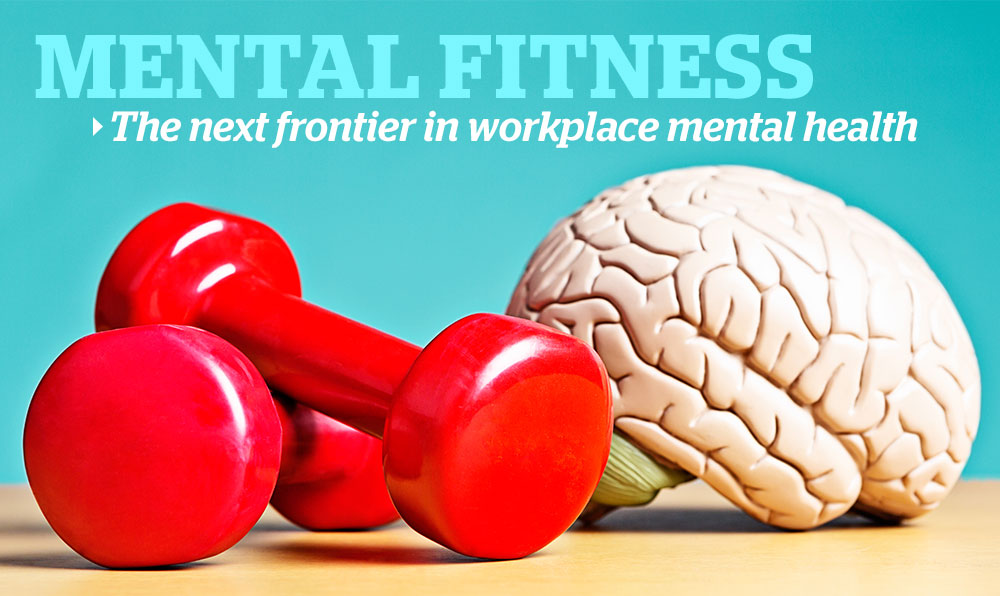

Columns/Blogs
Features
Mental Health
Emotional regulation is a critical competency for mental health
By Bill Howatt

EDITOR’S NOTE: ‘Mental Fitness: The next frontier in workplace mental health’ is a weekly series, in partnership with Dr. Bill Howatt of Howatt HR Consulting in Ottawa. This series takes a deeper look at mental fitness — an approach to prevent mental harm and promote mental health.
“Learning to navigate unpleasant emotions is a must for finding peace of mind.” — Dr. Bill Howatt
I have a few diabetic friends whom I care deeply about, so when we are golfing I check in to ensure that their sugar and insulin levels are OK.
They appreciate that I care and often check their monitor when I ask and say, “Thanks for asking; all looks OK;” or they take any required action to adjust their levels. Monitoring sugar and insulin levels to protect their physical health is not an option for them.
When it comes to mental health, two factors that play a major role in impacting well-being are pleasant and unpleasant emotions.
Like sugar, pleasant emotions raise our spirits while unpleasant emotions bring us down. The longer we spend in unpleasant emotions, the more we put our mental health at risk. One way to positively impact mental health is to navigate unpleasant emotions.
“Languishing,” touched on in a recent article by Adam Grant in the New York Times, is a sense of stagnation and emptiness.
When we are languishing, we are experiencing more unpleasant emotions than when we are flourishing. People who are languishing do not necessarily have a mental illness, but their functioning and ability to perform at their full potential is impeded.
What we can do to improve our mental health is not ignore unpleasant emotions.
The more time we spend in unpleasant emotions, the higher our risk of languishing or even developing a mental illness.
We can manage unpleasant emotions by being accountable for our emotions.
Psychologically Safe Workplace Awards provide employers tools, data on mental health
Strategy for improving emotional regulation
Emotional regulation measures the degree we can deal with unpleasant emotions like rejection, worry, excitement, frustration, anxiety, or feeling low. This is a skill that many of us simply have never been taught nor have focused on developing.
As much as we like to think we are logical creatures, when under pressure and stress, many make illogical and emotional decisions that they look back on with regret.
Many of our unpleasant emotions are a result of direct interaction with another human, replaying an historical event, worrying about a future event, or being unhappy with what is happening at the moment.
Emotional regulation is training the brain to not overreact to, nor fear unpleasant emotions. Avoiding them altogether can negatively impact a relationship.
I have created a mnemonic to help me navigate unpleasant emotions. As you practice the ERP mnemonic, you install a strategy that with practice can become a positive habit.
The following table can be printed and used as a cheat sheet. By repeatedly reading and focusing on learning this model, you will learn how to avoid reacting to unpleasant emotions and influence your emotions in a healthy way rather than feeling trapped.
I learned this routine by running it through my head four or five times a day.
It does not work all the time, but it has often enough to know I have more control than I may like to admit.
ERP mnemonic for emotional regulation |
|
| Expect unpleasant emotions | · Prepare for unpleasant emotions by acknowledging there is no removing them.
· Accept that unpleasant emotions will often pop up without notice. · Understand that unpleasant emotions are nothing more than the brain sending a signal that it does not control behaviour choices; it only influences them. · Accept that regardless of unpleasant emotions, all behaviours and decisions are yours. |
| Resist reacting | · Once you notice an unpleasant emotion, name it.
· If you feel an urge to act, put your foot on the reaction brake pedal. · Focus on tolerating the unpleasant emotion rather than trying to avoid or fight it. · Resist the urge to act impulsively. · Recognize the situation for what it is, not what it feels like. · Question what thoughts are connected to the unpleasant emotion. |
| Pivot towards a pleasant emotion | · Pay attention to others and the kind of emotions they are projecting.
· Determine what kind of emotions are most appropriate for the situation (for example: being calm and collaborative will facilitate a better outcome than rage). · Challenge the unpleasant emotion’s value and focus on a better emotion. · Initiate the desired emotion and put some energy into it. |
If you cannot regulate your emotions on your own, you will benefit from meeting with a mental health professional to get guidance on strategies to contain unpleasant emotions rather than avoiding or fearing them.
 Dr. Bill Howatt is the Ottawa-based president of Howatt HR Consulting and the former Chief of Research and Workforce Productivity at The Conference Board of Canada.
Dr. Bill Howatt is the Ottawa-based president of Howatt HR Consulting and the former Chief of Research and Workforce Productivity at The Conference Board of Canada.
If there is a particular microskill or topic you would like to see Dr. Howatt write on that supports employees’ mental health in the workplace, please send your request to Talent Canada editor Marcel Vander Wier.
Print this page